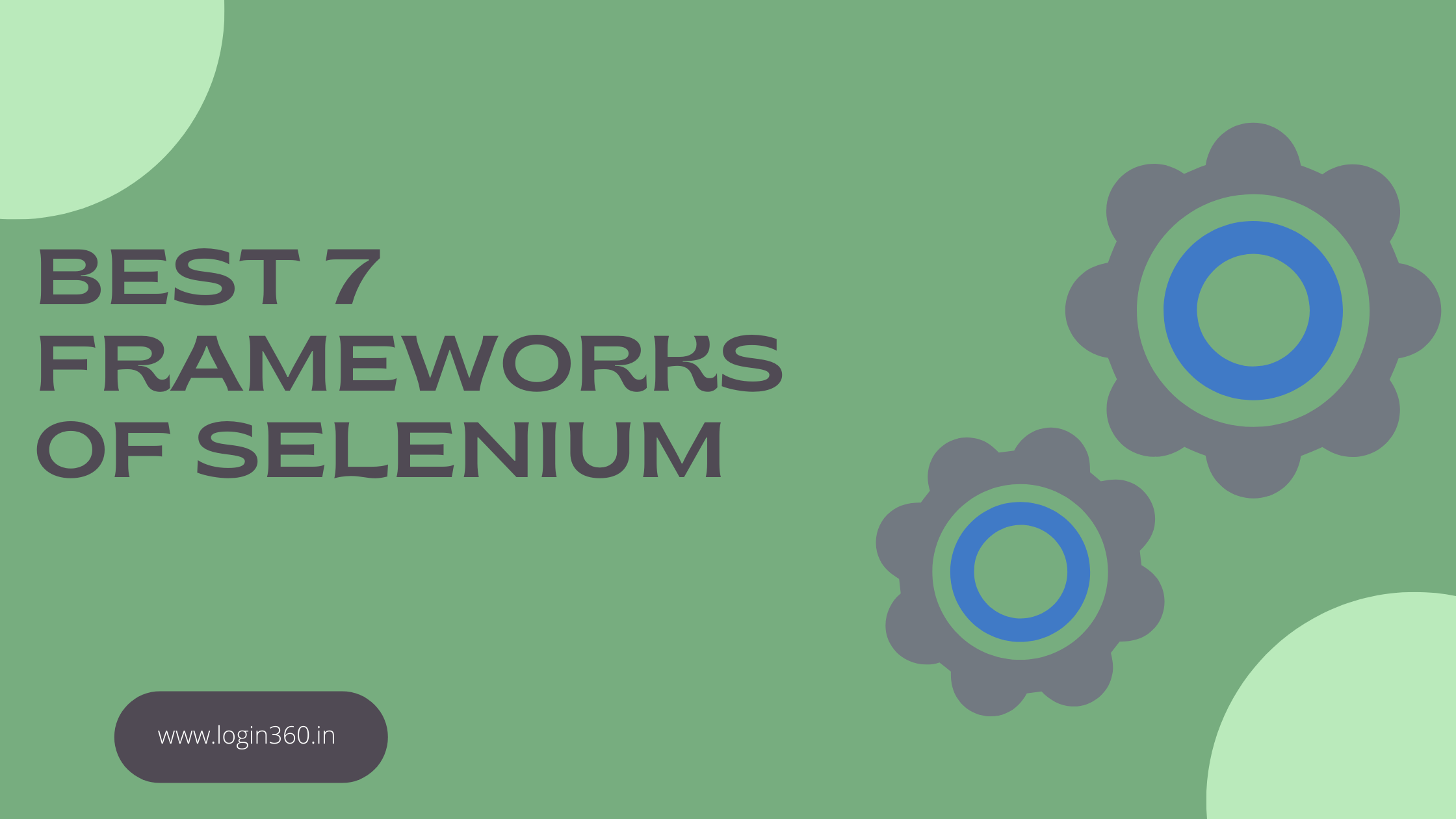

LOGIN360 Software
arunlogin360@gmail.com
06385872810
No-06, Ground Floor, 5th Main Road, Vijaya Nagar V Chennai - 600042
In this article, we are going to talk about Best selenium Framework in an easy manner for beginners. Selenium is one of the most popular open-source tools that automates web browsers
Selenium is an open-source, free automated testing framework for web applications that works with many different operating systems and browsers. Additionally, a variety of programming languages, including Java, C#, Python, and others that are similar, can be used to construct Selenium Test Scripts. Selenium testing is the term used to describe testing done using the Selenium testing tool.
Code maintenance is made simpler and more effective by the Selenium Framework, a coding framework. Without frameworks, users may store "code" and "data" together, making them unintelligible and non-reusable. The advantages of frameworks, such as more code reuse, greater portability, cheaper script maintenance costs, and better code readability, can also be negative.
Best Selenium Frameworks
Modular Testing Framework
Data-driven Framework
Linear Scripting Framework
Behaviour Driven Development Testing Framework
Keyword Driven Testing Framework
Library Architecture Testing Framework
Hybrid Driven Testing Framework
Modular testing involves breaking down the entire software being tested into smaller, independent tests. Testers create test scripts module by module. Framework for Flexible Testing
To put it another way, the testers break down the program into many parts and independently develop test scripts for every module. using a master script to generate the proper circumstances for each of these separate test scripts, then combining them to create larger ones.
This master script is used to invoke the various modules and conduct end-to-end test scenarios.
The primary advantage of this framework is the abstraction layer it provides, which protects the master module from potentially dangerous changes made in individual tests.
According to the data-driven test automation paradigm, the logic of the test scripts should be maintained apart from the data utilized in the tests themselves. By feeding different test data sets to the script generator, we may produce test automation scripts.
The test data set must be saved in external resources like XML files, SQL databases, Microsoft Excel sheets, Microsoft Access tables (MS Access database), etc. To collect test data, the test scripts link to external services. Using this framework, we were able to quickly and easily adapt the test scripts to deal with various test data formats.
Compared to the module-based architecture, the use of this framework greatly reduces the number of test scripts.
The Linear Scripting Platform, a key test automation system, is characterized by the "Record and Playback" technique of implementation and linear execution. The "Record and Playback" framework is another name for this one, which is used to record and playback audio. This kind of framework is used to test tiny apps.
This testing technique treats the preparation and execution of test scripts for each test case separately.
All test activities, such as browsing, navigation, user inputs, and enforcing checkpoints, are tracked by the testers. After playing through the tests a second time, the testers use the scripts to run them.
By developing a platform that encourages active engagement from everyone, including business analysts, developers, and testers, among others, this Testing Framework for Behaviour Driven Development aims to achieve that goal.
The Development and Testing Teams must communicate more frequently. Users do not require any programming language knowledge to use it. When writing test requirements, we use everyday language that is not technical.
JBehave, Cucumber, and other technologies for behaviour-driven development are available on the market.
The term "keyword-driven testing framework" refers to a testing framework that uses keywords to guide the testing process. It is also known as "table-driven testing" or "action word-based testing."
In keyword-driven testing, we utilize a table structure to specify keywords or action words for each function or method we wish to test before executing it. Then, using the keywords from the excel sheet, it runs automation test scripts and reports the results.
With the help of keywords, this framework lets testers without programming knowledge work on test automation scripts and develop any kind of test automation script they want.
The code that reads keywords from an external excel sheet and calls the appropriate action supplied in the sheet is found inside the main class. Keyword-driven testing is similar to data-driven testing in that keywords serve as the main driving force.
The Library Architecture Testing Framework is a framework for testing library architecture. Structured scripting or functional decomposition are some names for it. It offers a number of unique benefits as a result of its modular architecture.
The functional testing framework recognizes similar tasks and arranges them into functions, much like the modular testing framework splits the application being tested into modules.
Once the functions have been organized, they will be retained in a library-like format. The test scripts later make use of these libraries to construct additional test cases.
A hybrid-driven testing framework combines two or more of the following frameworks. In certain ways, it serves as a framework for test automation.
It seeks to use the advantages and characteristics of other frameworks for the specific test environment that it oversees.
In the current market, the vast majority of teams are developing this hybrid-driven structure.
Despite the fact that there are numerous different test automation frameworks, we have only encountered a few of them. The Data-driven Framework, the Keyword-driven Framework, and the Hybrid Framework are the three most popular frameworks for test automation. While utilizing the Data-Driven Framework, we maintain test data in excel sheets and use TestNG's data provider to execute test cases against the data. In a framework that is keyword-driven, test cases are first created in an excel spreadsheet, after which keywords are created in the spreadsheet. The test cases are then run by the code by making a reference to this file.
The features of data-driven and keyword-driven frameworks are combined in the hybrid framework.